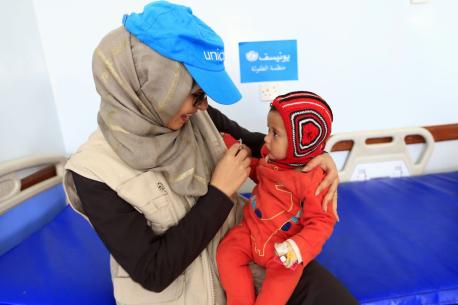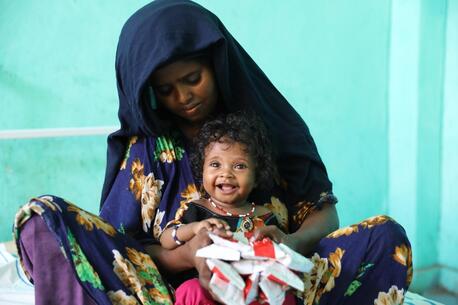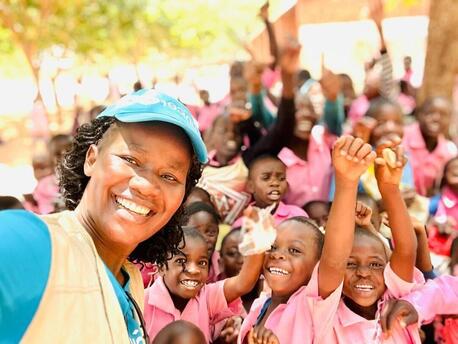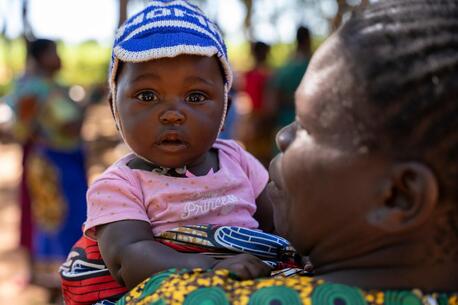
How to Understand UNICEF USA’s Charity Watchdog Ratings
Accountability, finances, leadership, culture and community are just some of the metrics that have earned UNICEF USA stellar charity watchdog ratings.
When you are considering making a donation to a nonprofit, independent groups like GuideStar, Charity Navigator and GlobalGiving can provide valuable information to help you decide which charities to support.
UNICEF USA has been awarded GuideStar's Platinum Seal of Transparency, the highest possible rating, in recognition for the honesty and visibility we provide to supporters.
We've also earned Charity Navigator's 4-Star Rating, the top score for nonprofits, which shows donors that they can confidently give to UNICEF USA as our passions and values align with our supporters.
To make the most of evaluations like these, it’s important to understand how the ratings methodologies work and how well they apply to the unique structure, governance and operating conditions of the nonprofits ranked.
Liquidity and UNICEF USA’s mission
A measure of a charity’s financial health is whether it has the liquidity to weather an economic downturn. This is one of the important metrics Charity Navigator uses to rate nonprofits like UNICEF USA.
But when so many millions of the world’s children are endangered by war, disease, poverty and climate change, UNICEF USA looks at its cash reserves differently; if the choice is between keeping money in the bank and sending water, nutrition and medical supplies out into the field, children will always come first. That approach is core to UNICEF USA’s mission. In some years that means that cash in reserve falls short of Charity Navigator’s preferred ratio.

How UNICEF USA sees liabilities versus assets
Charity Navigator’s preferred liabilities to assets ratio is an important metric. It cannot fully measure the value of two crucial strategic decisions UNICEF USA has made in recent years that have drastically improved both its capacity and sustainability.
Operating a nonprofit in New York City can be tremendously costly. The per-square-foot cost of office space is among the highest in the nation. To reduce monthly costs and build long-term equity, UNICEF USA financed via bond financing the purchase of the three floors it occupies in lower Manhattan.
The bond on UNICEF USA’s New York City office space is a liability on its balance sheet. Owning Manhattan real estate is a major asset, which UNICEF USA capitalizes upon in order to work more efficiently and effectively. The savings on a high-priced office-space rental has allowed UNICEF USA to free up capital for its mission to save and protect the world’s children.
UNICEF USA’s innovative Bridge Fund
UNICEF USA is always on the lookout for new, strategic ways to generate flexible funding for whenever and wherever children need help. The UNICEF USA Bridge Fund is just one tactic UNICEF USA has innovated to meet that need.

An impact investing tool, the Bridge Fund is designed to remove financial obstacles when quick action means the difference between life and death. Since UNICEF USA created the Bridge Fund in 2011, it has fast-tracked more than $500 million to UNICEF to support emergency programs.
In March 2022, within weeks of the escalation of the war in Ukraine, the Bridge Fund supplied $15.5 million to expedite UNICEF's emergency response, rushing aid to children and families uprooted by conflict and in immediate need of safe water, health care and protection. By August, Bridge Fund grants to support humanitarian aid in Ukraine had risen to $19.1 million.
Yet the source of these revolving funds — 3-year and 5-year loans that are secured by net worth grants to UNICEF USA — appears on the accounting ledger as debt. In some fiscal years, that has counted against UNICEF USA’s Charity Navigator rating, and UNICEF USA’s four-star rating has dropped to three.
Year in and year out, what remains constant is UNICEF USA’s sustained, full-fledged and cost-effective commitment to helping children survive and thrive.
HOW TO HELP
There are many ways to make a difference
War, famine, poverty, natural disasters — threats to the world's children keep coming. But UNICEF won't stop working to keep children healthy and safe.
UNICEF works in over 190 countries and territories — more places than any other children's organization. UNICEF has the world's largest humanitarian warehouse and, when disaster strikes, can get supplies almost anywhere within 72 hours. Constantly innovating, always advocating for a better world for children, UNICEF works to ensure that every child can grow up healthy, educated, protected and respected.
Would you like to help give all children the opportunity to reach their full potential? There are many ways to get involved.





